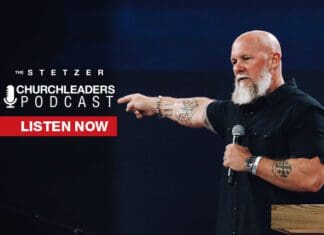When I was in Peru last fall, I marveled at the missionary community there. One small town is home to dozens of different mission agencies and outposts. Additionally, there is a missionary kid school and an airport for a handful of mission airplanes.
In other words, nestled in the corner of the Amazon Rainforest is a small town with a whole lot of missionaries. Some live there full-time, while others come and go from their work amongst tribes in the region. Some are engaged in frontline work and some are in supportive roles.
They are busy about many things: equipping indigenous Christians to share Christ with the uncontacted, orphan care, after school programs, training local pastors, planting churches, teaching missionary kids, flying and fixing missionary airplanes, providing pregnancy care, and on and on.
The hundreds of missionaries there are proclaiming Christ in hundreds of different ways.
Not only is their work diverse, but their backgrounds are diverse—both nationally and denominationally. I met workers who hail from all over Europe, North America, South America and even Asia. They’re Baptist, Presbyterian, charismatic, reformed, high church, low church, Lutheran, Anglican, egalitarian, complementarian you name it.
I marveled at this community not because of the vastness and variety of their work and not because of the diversity of their backgrounds and beliefs—that was all to be expected.
I marveled because of the love I witnessed amongst them.
As I spent four full days with the ladies in this community, I witnessed them seek to serve one another above themselves, listen intently to one another’s joys and sorrows, ask one another about projects and children and loved ones far away. I saw women easily crossing cultural lines, denominational lines and ministry strategy lines—deeply dividing lines in (most?) Christian contexts—to pursue one another. My brief glimpse into their community told me that they already had strong bonds across chasms that often divide.
The missionaries in this community clearly prioritize God’s Kingdom over their own kingdoms.
As I listened in to their conversations I heard them encouraging one another in their work, celebrating gospel victories, rejoicing over the health of their kids and marriages, sharing excitement about new teammates and new converts and new workers on the field. Across mission lines, these missionaries praised God for the things he had done in and through one another.
It was a marvel to witness because so often in the Christian community we want to grow our church. Our ministry. Our people. Our program. Our following. Our
platform.
We in ministry tend to compare our numbers and outcomes and strategies to one another. In pursuit of effective work, we are prone to forsaking the bigger picture. Rather than rejoicing with our brothers and sisters when God uses them, we feel a touch of jealousy, inadequacy, even judgement or justification as to why our approach is better.
Missionaries, pastors, Christian leaders, bloggers, authors, even Bible study coordinators and Sunday school teachers can easily be swept way by turf wars. When we focus on ourselves and our own efforts and fruit, we are tempted to clamor to build our own small kingdoms at the expense of joining in the work of God’s big kingdom.
But the missionary community I witnessed stands as a witness to the sweetness that God gives amongst his people when they pursue his big mission together, as one. They rightly prioritize and celebrate the growth of the church universal above and beyond the growth of their own work. And that’s what we’re really called to, isn’t it?
To the Corinthians Paul said, “For what we proclaim is not ourselves, but Jesus Christ as Lord, with ourselves as your servants for Jesus’ sake” (2 Corinthians 4:5).
We are called to be servants. To serve Jesus. To preach his name. To build his church. May we lift our eyes up and off of our own small kingdoms and be reminded of the beauty and grandeur and glory of God’s big kingdom. May our local work be only to that end—to shine the light on Jesus’ name, not our own.
May we ask ourselves, How might I pursue God’s glory in the work of others this week? How might I build up the church universal this week? How might I lift up my eyes off of my project this week, in order to see and rejoice in what God is doing through others?
My husband recently told our church that there are 59 commands in the New Testament to Christians to do something for one another: to love one another, encourage one another, be at peace with one another, rejoice with one another, serve one another, and on. This week let’s you and I—especially we who are in ministry—find some ways to live out a few “one anothers” amongst our brothers and sisters in Christ.
For God’s glory. For his name. For his church. For his kingdom.
This article originally appeared here.











